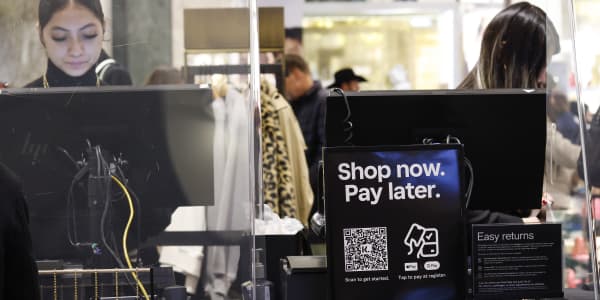
Retail sales increased 4 percent in November and December, topping an industry estimate that predicted they would rise 3.6 percent and underscoring the divide between retail's winners and losers.
The National Retail Federation released its final tally on Friday, hours after the Commerce Department said that core retail sales were up 4.3 percent over the prior year in December.
The beat, which came on the back of a slew of disappointing sales announcements from traditional retailers, was higher than the prior 10-year average of 2.5 percent growth. Non-store sales, which are predominantly comprised of digital revenue, increased 12.6 percent.
"These numbers show that the nation's slow-but-steady economic recovery is picking up speed and that consumers feel good about the future," NRF President and CEO Matthew Shay said in a statement.
"Retail mirrors the economy. And while there might have been some bumps in the road for individual companies, the retail industry overall had a solid holiday season and retailers will work to sustain this in the year ahead."
Consumers this season benefited from higher wages, lower unemployment, and stronger stock markets and home values.
Earlier this week, First Data reported that retail spending increased 3.6 percent over the holidays. Separate data from Mastercard SpendingPulse showed sales grew 4 percent over the prior year.
And last month, the NRF said in a blog post that November's 5 percent year-over-year retail sales gain indicated the season would "meet or exceed" its forecast for 3.6 percent growth.
However, results were choppy throughout the season and among different retailers. Several chains said they saw a big boost during the Thanksgiving to Cyber Monday stretch, which was followed by a more pronounced lull than in years' past. Then, in the final days before Christmas, traffic rebounded more substantially than in 2015.
"The highs are higher and the lows are lower," Frank Conforti, CFO at Urban Outfitters, said during a presentation at the ICR Conference in Orlando, Florida, Wednesday.
Many in the industry have chalked that trend up to smarter consumers, who wait until key promotional moments to make their purchases.
Performance also varied widely by chain. Most department stores and specialty shops that preannounced results said that sales deteriorated from the prior year. That includes GameStop, which reported an 18.7 percent same-store sales decline on Friday. On the flip side, Lululemon and Urban Outfitters grew revenues at their established locations.
Online also accounted for a larger piece of the pie, with ComScore's early results showing industry growth between 16 percent and 19 percent. Amazon is widely expected to be the biggest beneficiary of that growth.
The market will have a better sense of how retailers performed next month, when many major chains release their quarterly earnings results. Analysts contend that those who miss the mark will not have an easy out, as chiller weather and a stronger economy were the perfect recipe for success.
As was widely expected, department stores and electronics chains were the biggest losers. In addition to the web, health and personal care shops; furniture stores; and building materials and supplies retailers performed the best.




